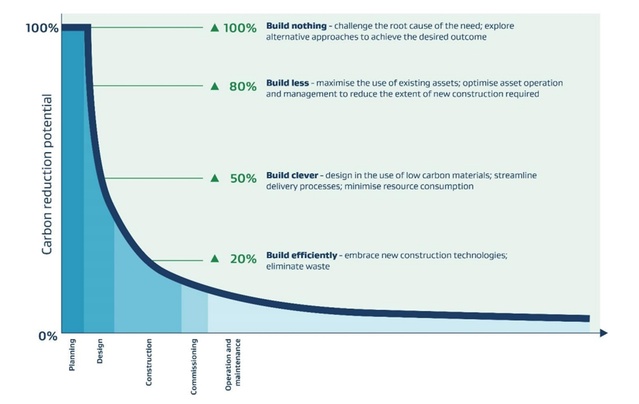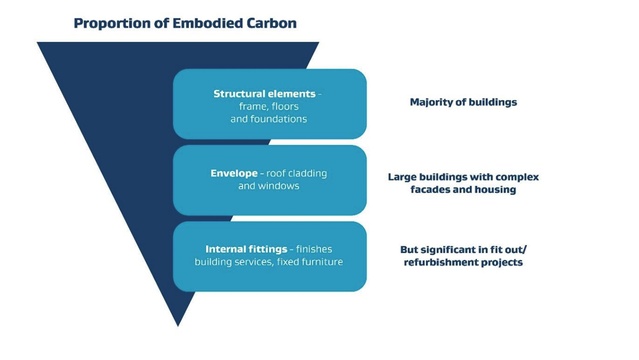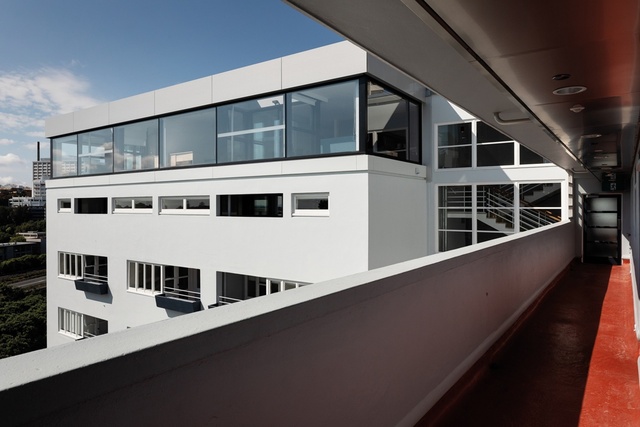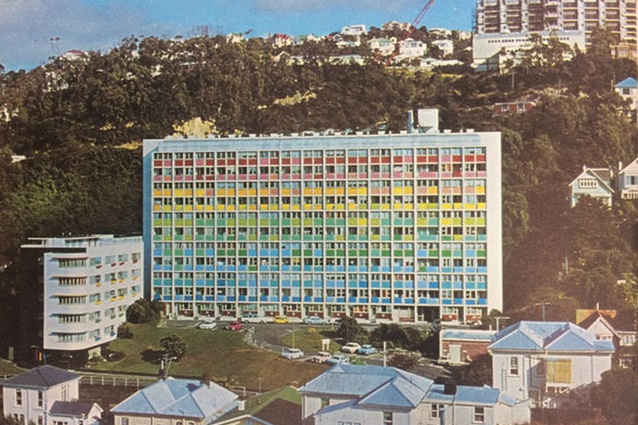The (carbon) elephant in the room
Heritage architect and educator Joanna Theodore writes about the decision to remove Wellington’s iconic Wilson Flats from the Heritage Schedule, paving the way for sledgehammers, wrecking balls and climate change issues.
PART 1
The discussion that led to the Wellington City Council’s recent decision to remove the Gordon Wilson Flats from the heritage schedule, in the Proposed District Plan, ranged from exchanges of fond, sun-filled memories to the desire to wield sledgehammers. Heritage values were discussed, of course, along with housing shortages, however, the elephant in the room that was missing from the conversation was the tonnes of embodied carbon that lie locked within the building’s substantial, concrete structure.
Paradoxically, heritage scheduling within a district plan, is the only legislation that protects a building from being demolished just because someone feels like it. There is no legislation that requires us to consider the impact that demolition will have on the environment, yet we all know that “(t)he greenest building is the one that already exists.” This is further ratified in MBIE’s Procurement Guide to Reducing Carbon Emissions in Building and Construction*, published in 2021. The diagrams in the guide clearly illustrate that building nothing or building less, is the most effective way we can reduce carbon emissions.

Secondly, the Guide informs us that the primary structure contains the most embodied CO2, so at the very least, this is what should be salvaged — we have already spent this carbon so why waste it?

Sadly, demolition has been on the cards for the Gordon Wilson Flats since it was purchased by Victoria University of Wellington (VUW), in 2014. Yet, this building presents so many opportunities for re-use and connection with the rest of the campus, even with the heritage scheduling, that demolition should not even be on the table. Set on a revolutionary piling system, with a reinforced concrete superstructure, the Gordon Wilson Flats are particularly well-equipped for longevity. Consequently, one would expect a leading educational institution such as VUW, to set an example in navigating facilities management, through the Climate Emergency. Their motto gives further rise to such expectations: ‘Capital thinking. Globally minded. Mai i teiho ki te pae.’ Knocking this building down does not represent good capital thinking or global-mindedness.
The linear model of take-make-use-dispose led us into the Climate Emergency; re-framing to a model based around care, repair and re-use has the potential to lead us out. Embracing such an approach is the Westminster Council, in London, which in March of this year, proposed a new policy of Retrofit First. The policy will require developers to assess the whole-lifetime carbon emissions of buildings, considering the environmental impact of demolition, rebuild and the future existence of the development, thus re-framing how projects are approached in the future.
PART 2
Re-framing our approach to demolition is required but so is re-framing how we approach change to heritage buildings. Often the rules that underpin a heritage designation end up being the undoing of the very thing that they are trying to protect, by making developers shy away from a retrofit project. Heritage rules must embrace change because buildings are born out of need and ensuring their ongoing functionality requires change; in turn, the ongoing functionality is the best way to ensure their longevity. If the process of making changes to heritage buildings is overly onerous, projects simply fall into the too-hard basket — it is easier to wilfully neglect than to care and protect. Supporting a constructive change process is the best way to respond to the Climate Emergency and to the conservation of heritage buildings. Heritage and sustainability are inextricably linked because every object embodies both memory and carbon.
A constructive change process has been undertaken at the recently completed refurbishment of Balfron Tower, in London. Like the Gordon Wilson Flats, Balfron Tower is a modernist and a survivor of former social housing dysfunction. However, it has been given another chance and its longevity has been assured by bringing the building up to current building regulations, reconfiguring many of the flat layouts and, perhaps most controversially, replacing the original timber windows with new aluminium ones. This greater tolerance for accepting change contributed to the project’s viability.
Closer to home, yet another modernist, the Symonds Street flats — also designed as social housing — now function as much desired, post-graduate student accommodation for the University of Auckland. Sporting an extra floor, following relatively minimal structural strengthening, the project has been a resounding success, where change has been embraced and the story of the building continues.

Understanding the true significance of a building is essential to the success of a conservation project and too often the intangible values are underplayed at the cost of the tangible ones, placing a disproportionate weighting on the things we can see, over the ones we cannot, and this often does not support a constructive change process. At the Gordon Wilson Flats, it is the story that makes this building truly significant; it is the story that we need to celebrate and in a Climate Emergency, we cannot afford to demolish this building.










